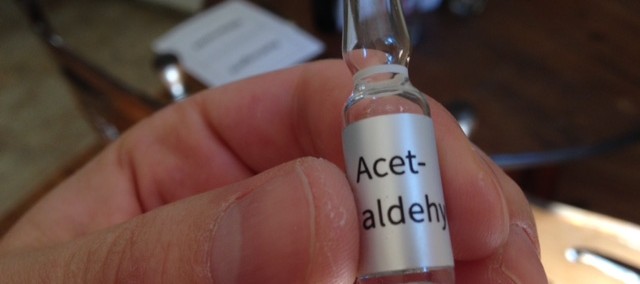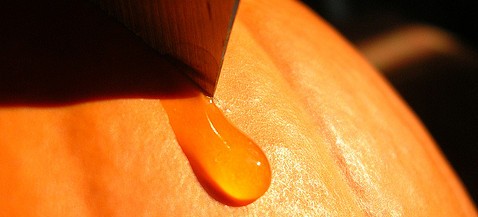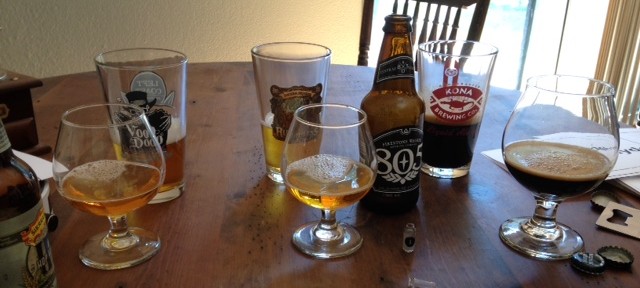
About two weeks ago I decided to bite the bullet and purchase Siebel Institute's Comprehensive Sensory Training Kit to improve my craft beer tasting skills. It was pricey at $250, but because I'll be using it myself I can get a few tests out of each flavor. Each vial is enough to dose 1L of beer.
- 1L = 34 fl. oz.
- 1 beer = 12 fl. oz.
That means I have enough to dose 3 different beers. I don't want to waste a whole beer with nasty flavor, and I want to compare with the original flavor, so I'll be dosing 1/2 a beer. That means I get 6 doses. I'll separate it into two tests. I'll do a side-by-side test of 3 beers where I know which one is dosed. I was unsure if this would affect my ability to taste, but from today's test, it was quite obvious that the off flavors are very strong and easy to detect anyway.
But then, to mix things up, I'm going to multi-test a bunch of different flavors and attempt to have a blind testing to see if I can guess the off flavors.
I won't do all 25 at once, but will probably do 5 or so at a time as I start to collect 1/2 used bottles. I haven't planned that portion quite yet, but I imagine that I'll have stickers on the bottom of plastic cups.

Table of Contents
Today's Test: Acetyldehyde
This was one of the ones I was looking forward to most because I hear so much about it.
- Flavor Name: Acetyldehyde
- Similar To: Green apple, cut grass, fresh cut, raw pumpkin
- Causes: Incomplete fermentation, lack of oxygen during growth phase of yeast, late stage oxygenation during fermentation. An acetobacter infection could also be the source if this is a flavor that has developed over time rather than noticeable right away.
- How to fix it: If it's a result of oxygen depletion or incomplete fermentation Give the beer more time. Yeast (even in the bottle) will clear this up over time. The fewer yeast cells you have, the longer it will take to clear up of course. If you're still in primary, it shouldn't be a problem. In secondary, there's still probably enough in the beer, but it may take a few weeks.
In the bottle or keg, remember that there still is yeast in there! That's how sediment forms. Keep it at cellar temp rather than in the fridge til the flavor clears up. I use clarifying agents in all my brews and always have enough yeast in suspension to bottle condition.
If it's the result of an acetobacter infection, I see conflicting information on whether or not this will clear up. I'd say give it some time, but I'm not convinced that a bacterial infection will get better over time. Would yeast be able to clean up off flavors created by acetobacter?
There is also some confusion on whether acetobacter causes vinegar flavors or green apple flavors, so we may be talking about a different beast altogether. When I get my ACETIC ACID taste test completed, I'll link to it and you'll have to be the judge of what flavor you're getting and the cause.
I thought it was interesting that both not enough oxygen for the yeast to complete their job and adding oxygen at the wrong time can cause the same flavor. Basically, this chemical is an intermediate step while the yeast is converting sugar to alcohol. If the yeast can't finish its job, instead of creating alcohol the acetyldehyde sticks doesn't complete the step.
But adding oxygen later can also cause ethanol to reverse the reaction, re-creating acetyldehyde. Crazy, right?
Like many off flavors, I wasn't sure if I had really tasted this flavor before. The only time I may have tasted it was during the Thai PA yeast starter fiasco where I accidentally doubled the DME of my yeast starter and they went nuts.
The whole starter had a distinct green apple smell, and I was worried that a bad starter would ruin the beer. It didn't, and actually from what I've read about this chemical recently, if your beer has this flavor, leaving it sit around a while to finish fermentation can actually clean itself up. So that batch of beer turned out fine.
However, what I discovered from this tasting is that there was no green apple flavor AT ALL. Surprisingly, the most predominant flavor sensation I got from the dosed beers was raw, cut pumpkin.

Fresh cut grass would have been my next way to describe it. Something about it smelled and tasted very much like raw plant material. I was surprised at how solventy it smelled. I have always associated green apple flavor as being something tart and pleasant. This was not a pleasant flavor, not at all.
In the instructions for the kit, they say to pick a neutral ale. I have plenty of this stuff to go around, so I picked 3 very different beers to see how it affected them and my perception of this flavor. Here are the beers I picked up.
- Firestone Walker 805 (my neutral ale)
- Sierra Nevada Hop Hunter IPA (highly bitter, strong hop flavor/aroma)
- Deschutes Obsidian Stout (dark, roasty)

Non-dosed Beer Tasting Notes
Hop Hunter IPA
- resiny, strong hop flavor/aroma
- dry hopped flavor (slightly grassy, appropriate for style)
Firestone Walker 805
- crisp, clear, dry
- labeled a ‘blond ale', but has kolsch yeast flavor (apparently they use London ESB Ale yeast)
Obsidian Stout
- full body, dry
- roasty, coffee flavors derived from malt, with American hop flavor
Dosed Beer Tasting Notes
Hop Hunter IPA
- easily detected in the nose, but dry hopped flavors disguise the grassiness of acetyldehyde
- when drunk continually, becomes less perceptible in an IPA. Drunk side by side is quite obvious
Firestone Walker 805
- very obvious in nose and flavor
- made beer essentially undrinkable
Obsidian Stout
- most obvious in this sample, did I over dose it?
- I actually choked a bit just by sniffing the glass. Maybe the dry roastiness accentuated this flavor?
After tasting, I had the flavor of cut pumpkin in my nose and mouth for at least 3-4 hours afterward. This tasting left a lasting impression on me, and I don't think I'll ever be able to look at another pumpkin for the rest of my life without remembering today's events. Ew.
What about you? Do you taste green apple, cut pumpkin, grass, or something else?
Leave a Reply